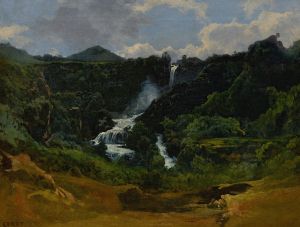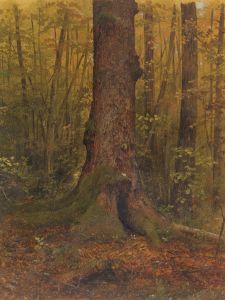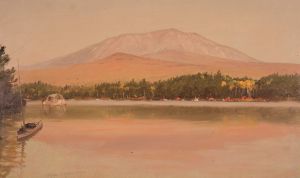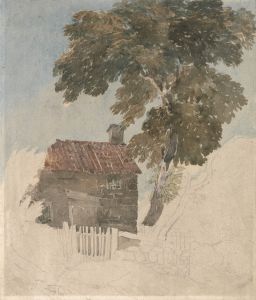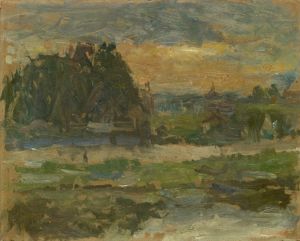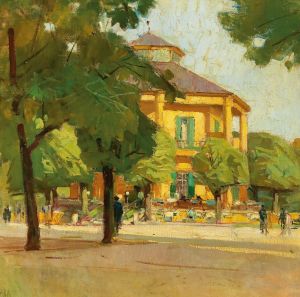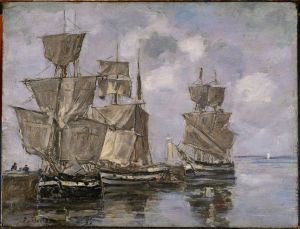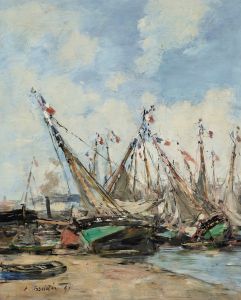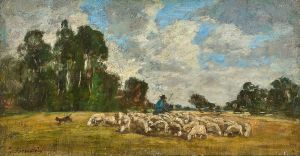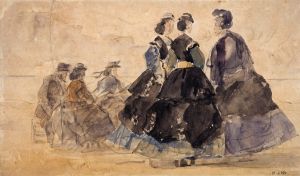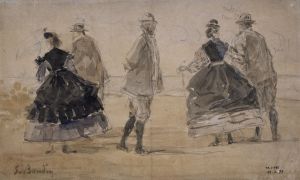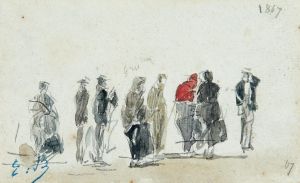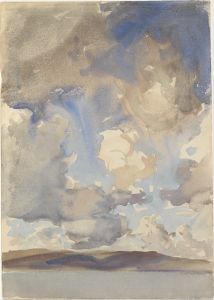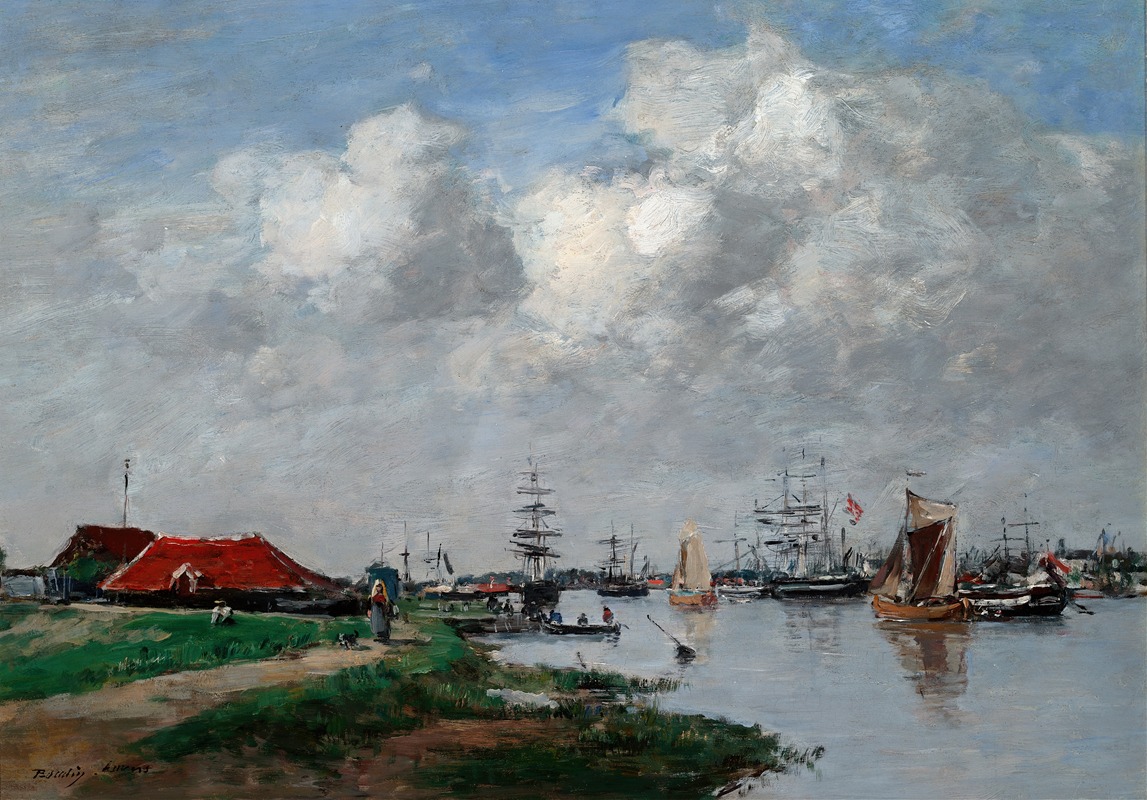
The Escaut River in Antwerp
A hand-painted replica of Eugène Boudin’s masterpiece The Escaut River in Antwerp, meticulously crafted by professional artists to capture the true essence of the original. Each piece is created with museum-quality canvas and rare mineral pigments, carefully painted by experienced artists with delicate brushstrokes and rich, layered colors to perfectly recreate the texture of the original artwork. Unlike machine-printed reproductions, this hand-painted version brings the painting to life, infused with the artist’s emotions and skill in every stroke. Whether for personal collection or home decoration, it instantly elevates the artistic atmosphere of any space.
"The Escaut River in Antwerp" is a painting by the French artist Eugène Boudin, who is widely recognized for his contributions to the development of landscape painting in the 19th century. Boudin was born on July 12, 1824, in Honfleur, France, and he is often celebrated as one of the precursors to the Impressionist movement. His works are known for their vibrant depictions of coastal scenes, skies, and waterways, capturing the transient effects of light and atmosphere.
This particular painting, "The Escaut River in Antwerp," showcases Boudin's skill in rendering the natural environment with a keen eye for detail and a sensitivity to the changing conditions of light and weather. The Escaut River, also known as the Scheldt River, is a significant waterway in Western Europe, flowing through France, Belgium, and the Netherlands. Antwerp, a major port city in Belgium, is situated along this river, making it an important location for trade and commerce.
In "The Escaut River in Antwerp," Boudin captures a scene along the river, likely focusing on the bustling activity of the port and the serene beauty of the waterway. His use of color and brushwork conveys the movement of the water and the play of light on its surface, typical of his plein air painting technique. Boudin often painted outdoors, directly observing and recording the natural world, which allowed him to create works that are both realistic and imbued with a sense of immediacy.
Boudin's influence on the Impressionist movement is notable, as he was one of the first artists to paint en plein air, a practice that would become a hallmark of Impressionism. He was also a mentor to Claude Monet, encouraging the young artist to pursue landscape painting and to experiment with capturing the effects of light and atmosphere. Boudin's work, including "The Escaut River in Antwerp," exemplifies his dedication to these principles and his ability to convey the ephemeral qualities of nature.
Throughout his career, Boudin received recognition for his contributions to art. He exhibited at the Salon in Paris and was awarded a gold medal at the 1889 Exposition Universelle. His works are held in numerous prestigious collections, including the Musée d'Orsay in Paris and the National Gallery of Art in Washington, D.C.
"The Escaut River in Antwerp" is a testament to Boudin's mastery of landscape painting and his ability to capture the essence of a place through his keen observation and artistic skill. The painting remains an important example of his work and continues to be appreciated for its beauty and historical significance.





